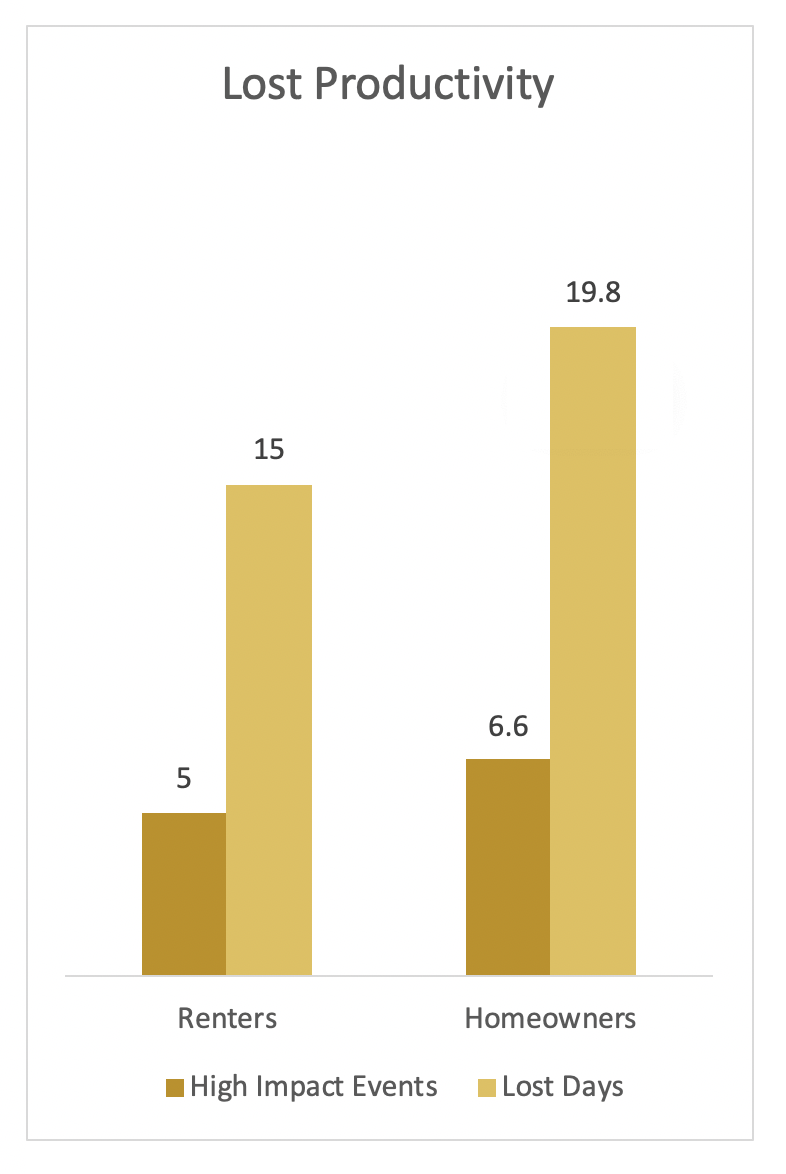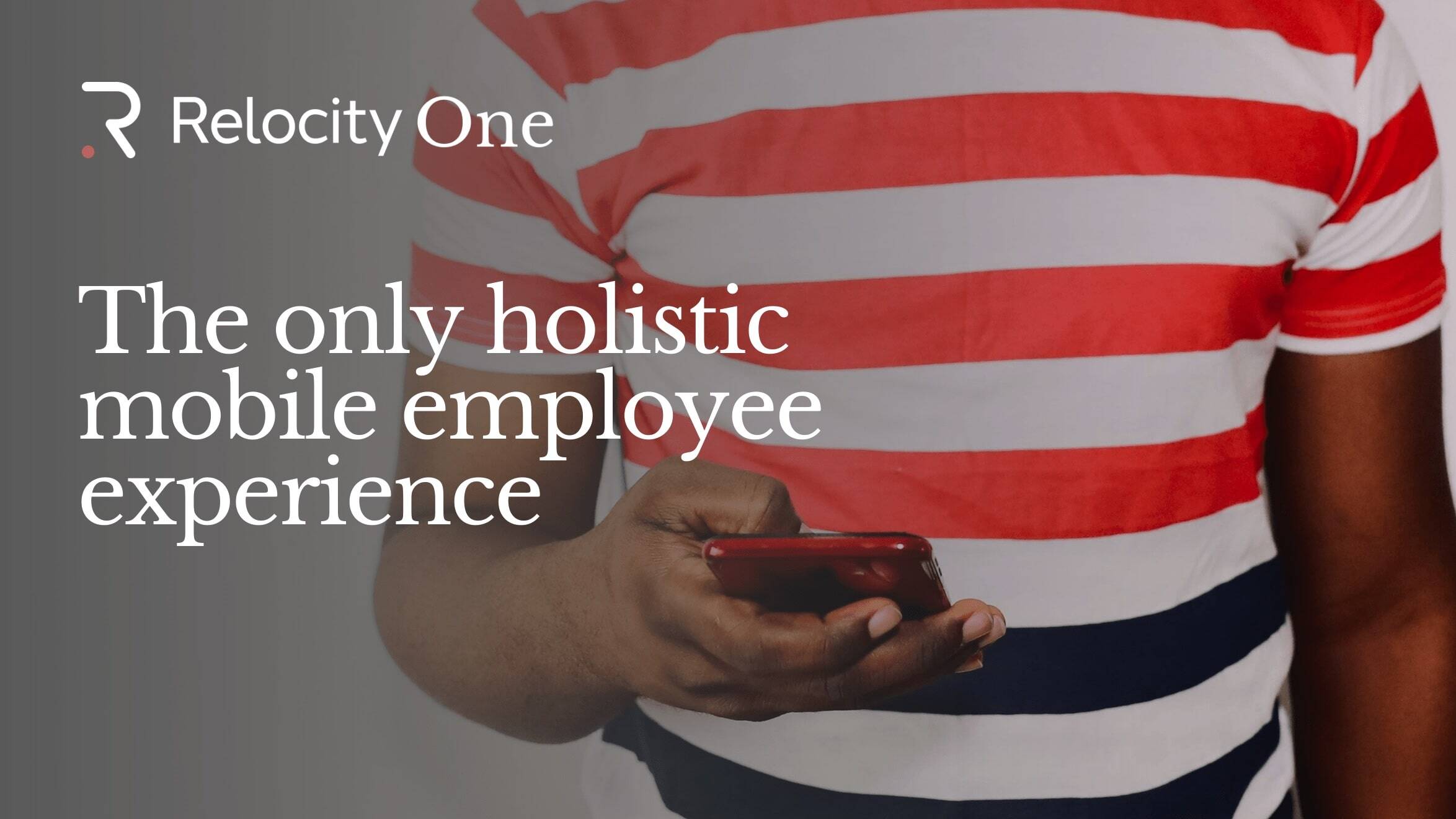Altair Global names Relocity winner at the 2023 Supplier Partner Awards Ceremony | Relocity
Los Angeles, Calif., October 24, 2023 – Held in Boston, Massachusetts, during Worldwide ERC®’s Global Workforce Symposium, Altair Global hosted its...
The fiscal costs of employee relocation can be budgeted and planned for, but one high-impact element of global mobility that many companies don’t consider is lost productivity.
We’re living in a golden age of mobility, so many companies have providers like relocation management companies (RMC) and destination services that give them some visibility of the costs involved with relocating talent. However, have you considered the indirect costs associated with relocation? Moving is a major life event for talent and the process features many moving parts –many outside of the office–which can lead to a dip in employee productivity. A study by Altair Global, suggests that lost productivity costs can be as high as $10K per relocating employee, or higher!
Luckily, although the impact can be costly, the mitigation need not be.
Productivity losses due to relocation should come as no surprise when you consider the disruption that people experience in the process of uprooting their lives from one city and attempting to recreate some semblance of normality in another. The transition is even more disruptive if talent has a family.
Even for the most dedicated and responsible employee, managing such a profound transition is bound to demand extra time and effort. Where else can an employee find this extra time except by intruding on work hours?
Typically, companies expect a relocation transition period to last only a few days. In the traditional model, companies have provided an average of only 2-3 days of logistical support in the form of destination services. Companies generally expect productivity to be almost normal by the time the employee returns to regular work hours. However, evidence reveals how unrealistic these expectations can be.

Altair Global recently performed a survey of over 1,200 relocated employees from 12 companies to learn about the hidden costs of relocation. Different facets of the relocation process were divided into “low-impact” and “high-impact” events, with high impact events defined as causing more than three days of lost productivity, as reported by the respondents.
Homeowners reported an average of 6.6 high-impact events, and renters reported an average of five high-impact events, during their relocations. In terms of time, this means renters experienced 15 days of lost productivity, and homeowners reported a loss of 19.8 days!
These numbers are startling when compared to the expectations of most companies, especially when you consider that this lost productivity is above and beyond the expected lower-impact events that make up the normal relocation period.
What constituted high-impact events? According to the survey, the most impactful events in terms of lost productivity (in order) were:
1) Finding a home at the destination
2) Selling the home at point of origin or breaking the lease
3) Shipment of household goods
4) Job training/professional development
5) Acclimating to the new job
6) Settling into the new destination.
Other impactful events included family issues, finding a support network, and setting up the new household. So, the majority of impactful events occur at the destination.
These figures reflect the primary relocation process, but productivity losses can continue beyond the initial transition. To document this, the survey continued by asking respondents how long it took for them to return to a completely normal “pre-move” state after they relocated. Only 2% reported being completely back to normal after one month! For 48% it required 2-3 months, and 33% required 4-6 months. For 6%, it required over six months to become as productive as they were before their move.
As the Altair survey clearly demonstrates, the costs of relocation almost always go far beyond the amounts listed on vendor invoices. In fact, lost productivity can end up costing far more than any direct expenses associated with relocation.
According to Altair, for a company that relocates 100 employees per year (50% homeowners and 50% renters), the financial impact of lost productivity in terms of salary, benefits, and expected ROI, in addition to lost revenue, could be more than $900,000 per year.

The above statistics reveal more than just the hidden costs associated with the relocation process. If you pay close attention, they are also a plea for help. When one considers the disruption and stress reported by employees who are relocating, the negative impacts affect more than just the company’s bottom line. They also take a toll on the emotional and psychological well-being of an employee.
If you want to improve the employee experience, offering support during and after the relocation process is a great place to begin.
Compared to the price of lost productivity, providing your employees with a benefit to support their transition periods can be very affordable. Especially if your Destination Services Provider (DSP) works on an hourly model, a modest investment can have a dramatic positive impact on the employee experience and hasten the return to productivity.
DSP’s do this by offering guidance based on extensive local experience, and by taking away the stresses of adapting to a new environment much more quickly. Beyond helping employees find the right home, a quality DSP benefit can help employees gain access to the best schools, accommodate their pet needs, deal with government bureaucracy, manage their home life, and then get back to work creating value for your company in a much shorter timeframe than they would if left to deal with these issues all on their own.
The process can be even more efficient if supported by innovative technology, an area in which Relocity is an industry leader.
By considering the long-term bottom line, and not just the immediate expenses of relocation, mobility managers have an opportunity to mitigate the inevitable loss of ROI associated with lower productivity by providing a DSP benefit as a regular part of their relocation policies. When the positive effects of an improved employee experience, higher morale, and enhanced employer brand are factored in, destination services are clearly a win-win solution for all involved.
To find out how Relocity can be part of the solution, please contact sales@relocity.com
* * * * *
To download the full report or read additional studies within the Momentum Survey Series*, please visit Altair Global’s website.
*Momentum study data used with permission from Altair Global Services, LLC.
About Altair Global
Since 1989, Altair Global has been delivering exceptional mobility experiences to customers and clients worldwide. Supported by sophisticated, dynamic technology, our focus on experience management drives continuous improvement and innovation in our full-service global assignment and relocation services. Trust Altair to guide your mobility journey. Please visit www.altairglobal.com.

Los Angeles, Calif., October 24, 2023 – Held in Boston, Massachusetts, during Worldwide ERC®’s Global Workforce Symposium, Altair Global hosted its...

The Gen Z shift: Embrace the future In today's dynamic job market, Generation Z, the tech-savvy cohort aged under 28, is injecting fresh perspectives...

Los Angeles, CA – October 22, 2024 – Relocity, a leader in innovative corporate mobility solutions, is excited to introduce Relocity One, a...
